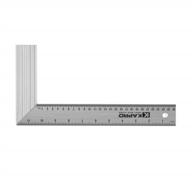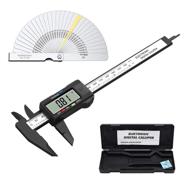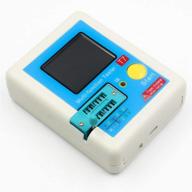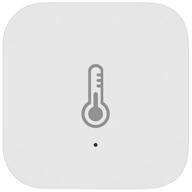
Review on 📻 Pocket-sized LCR-TC1 Transistor Tester with Colorful TFT Display for Diode Triode Capacitor Resistor Transistor LCR ESR NPN PNP MOSFET by Kevin Johnson

Great Value for LCR Meters
For $20 I wasn't expecting much. I figured I would get something that would give me a rough idea of the components I was testing. I figured it could tell me if the component was working and evaluate for me what the component's values would be, plus or minus. I was surprised to find that the tester does a good job of identifying components and measuring component values. As far as I can tell, the accuracy is within the tolerances of the components I've tested. For capacitors, the readings were usually within 10% of the nominal value. There used to be a 15% discount. Since it is an electrolytic capacitor, the value can deviate slightly from the nominal value. I got a reading of the ESR or equivalent series resistance which might be important to know. I also had Vloss readings which I don't understand. I tested a group of resistors ranging from 30 ohms to 1 megohm. All values were within 1%, which was the tolerance of the resistors themselves. I tested what I thought was an NPN transistor. The device seems to have made a mistake showing that it is a PNP transistor. However, I made a mistake. It was 2N3906, which upon inspection turned out to be PNP. I haven't had a chance to test the accuracy of the beta transistor, but I tend to trust the tester. Measuring the diode gave me its forward voltage drop and capacitance. I have two issues with this unit that cost it one star. . The former is relatively minor, but annoying nonetheless. The tester has a set of connectors for devices with a lever that releases and locks the component. You place the component and then move the lever down to lock it. This lever sticks out and there is no way to put it in a safe position. This is a design flaw that can lead to breakage. A much more important drawback is the complete lack of information on how to use the device. There was no manual or links to information on the internet. I think this is a serious problem. While the device is forgiving of the way you try to use it, some guidance would be very helpful. I intentionally put the components the wrong way round and on different sockets with no problems. The device can recognize the component. I placed the transistor in some way, and no matter how I did it, the readings were the same. Although I searched the internet for this device, I could not find any instructions or user manual. Hence one star for that. However, I highly recommend this device if you need a way to measure components quickly and relatively accurately. Edit: I found out that there is actually a guide available online. Search "LCR TC1 Manual" to find links. Since these instructions were missing, I increased my rating to 5 stars.
- Capacitance and Resistance Meters
- Problems
New products
Comments (0)
Top products in 🛠️ Scanners & Testers
Another interesting products

📏 Johnson Level and Tool 400EM-S 12-Inch Heavy Duty Metal Combination Square for Professionals, with Inch/Metric Measurements, Silver - 1 Square

8 Review

Kapro 307-08-TMS Try And Mitre Layout And Marking Square With Stainless Steel Blade, 8-Inch Length

18 Review

➕ Stainless Steel L-Square, Size 3-Inch x 4-Inch, Zona 37-434

8 Review

📏 CAMWAY 6 Inch Digital Caliper with LCD Display, Electronic Vernier Caliper, 150mm Stainless Steel Feeler Gauge, Plastic Digital Caliper Set for Zero Setting Inside/Outside Diameter, Depth, and Step Measurement Tool

3 Review






